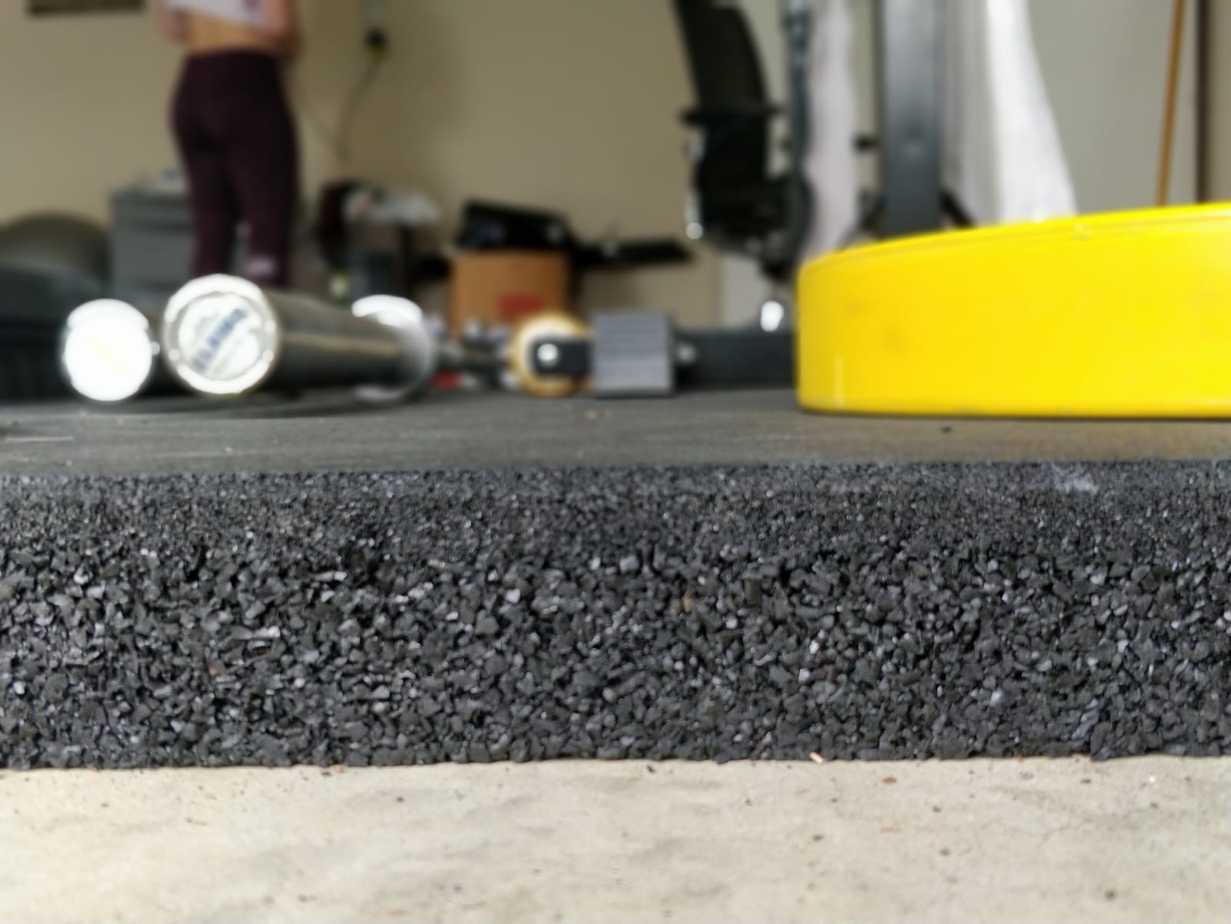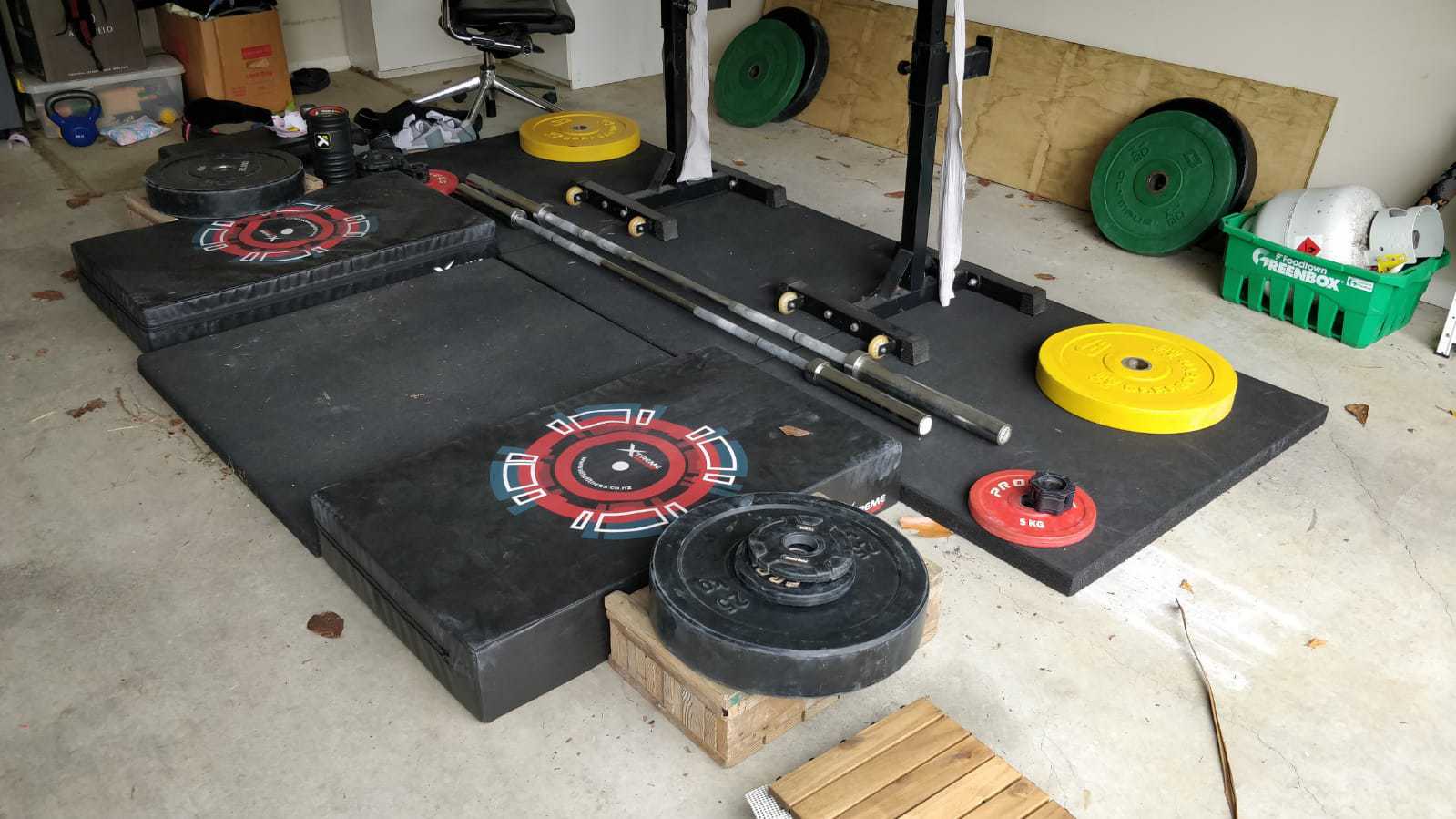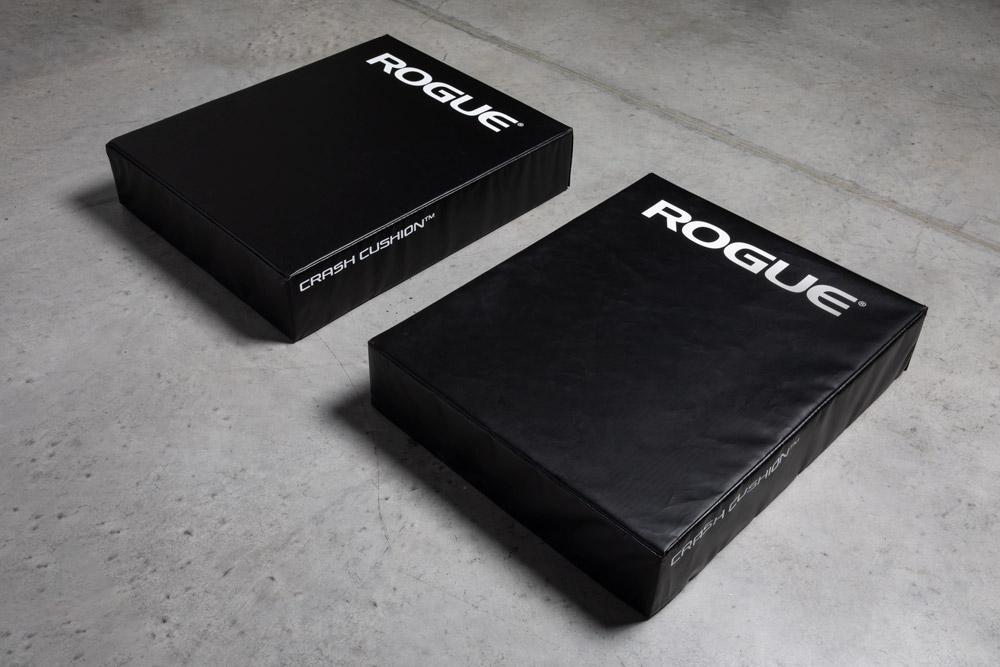So, it’s time to finally make use of the garage space you have. Maybe you’re sick of paying monthly gym membership fees and rarely going. Or you want the convenience of Weightlifting at home without having to sit in traffic.
Home gym flooring over concrete for your garage should be heavy-duty rubber especially if you are dropping weights as a Weightlifter. I would recommend rubber mats that are > 1.5” thick. Anything less and you may start to find cracks in the concrete under the mats.
Before we purchased our gym flooring to go over our concrete garage floor, we made sure to find the thickest rubber mats possible.
Past experiences have taught us that dropping weights in the same spot over and over again on thin rubber mats causes the concrete to crack, chip, and crumble under the flooring without you even knowing.
But can you even put rubber flooring over concrete? Won’t it slip? I will answer all of your questions below.
Table of Contents
Can You Put Rubber Flooring Over Concrete?

You can put rubber flooring over concrete and rubber flooring is often your best option especially when Weightlifting. Rubber mats do not slip when walking, jumping, or lifting making them the safest flooring for your home gym.
Further, rubber flooring acts as a shock absorber. This is important for multiple reasons:
Now rubber mats don’t take all of the noise away from dropping weights. You’ll still get the loud vibrations shaking the garage. But we have a solution for this further in the article.
If rubber flooring is the best option for concrete flooring in your garage gym, how thick should it be?
How Thick Should Garage Gym Mats Be?
If you are an Olympic Weightlifter, garage gym rubber mats should be at least 1.5” thick. Our rubber mats in our home gym setup are 2” thick and we would not go any thinner based on our experience.
Even with 2” thick mats, we get worried when dropping anything greater than 60 kg. So far though, we have been good.
Thick rubber mats are needed to absorb the shock when dropping weights from your shoulders or overhead.
If you use garage gym mats that are thinner than 1.5”, you will find they don’t provide adequate protection for your concrete floor.
However, if you are not dropping any weights, then thinner rubber mats are your best option.
In fact, if you don’t want to lay down thick rubber mats because of how heavy they are to move, you can opt for thinner rubber mats and add foam drop mats which are awesome for absorbing all of the impact from dropping weights.
We use ours every session and they take away the loud thumping sound and vibrations of the plates and barbell hitting the floor. It actually works out to be cheaper to go this route and is more space-conscious so if your garage is on the small side, I would recommend this.
Is It Bad To Workout On Concrete?

Working out on concrete comes with its drawbacks:
This is why Weightlifters train on wood platforms. Wood has more give and absorbs some of the impact from Weightlifting keeping your joints healthy.
So, instead of working out on concrete, lay down some rubber flooring or invest or build your own platform.
What Is The Best Flooring For A Home Gym?
I am yet to find < 1.5” thick rubber mats online in the USA. It seems most rubber matting is a maximum of ¾" thick.
So, unfortunately, I can’t recommend which rubber matting to get to lay over your concrete floor. However, shop around in your local area and rubber manufacturers and you may stumble across some thick mats.
Horse stall mats are usually the go-to. Just beware that they can smell BAD.
If you’re going down the route of a thinner rubber flooring to protect your concrete and equipment, go with the Rubber-Cal Shark Tooth Heavy Duty Mat with the Crash Cushion.
It’s important to note that even thin rubber may not provide enough shock absorption for your feet when landing especially if concrete is underneath. You may be better off having a thick plywood layer with rubber on the outside or underneath.
Most rubber flooring in your home gym can be driven over if you park your car inside. However, we prefer not to do that as if it’s raining, water invariably drips onto the mats and can pool between the mats staying wet underneath.
Further, if you store your Weightlifting equipment on your mats, you don’t want water anywhere near them.
When looking at home gym flooring, avoid materials such as vinyl and wood tiles, as well as puzzle design rubber mats.
Materials such as vinyl and wood tiles are slippery and don’t provide any protection to your concrete floor. You just end up wasting money on a thin layer to change the look of your concrete.
Rubber puzzle mats usually aren't great either as they are either too lightweight, too thin, and have designs on them that distort the flat surface which is not great for stability when lifting.
Summary Box
- Thick rubber mats at least 1.5” are your best option for Weightlifting and protecting your concrete.
- If only thinner mats are available, pair the mats with the Crash Cushion.
- Thin rubber mats may not absorb much of the shock from the feet landing so plywood on top of the rubber could be an alternative.


